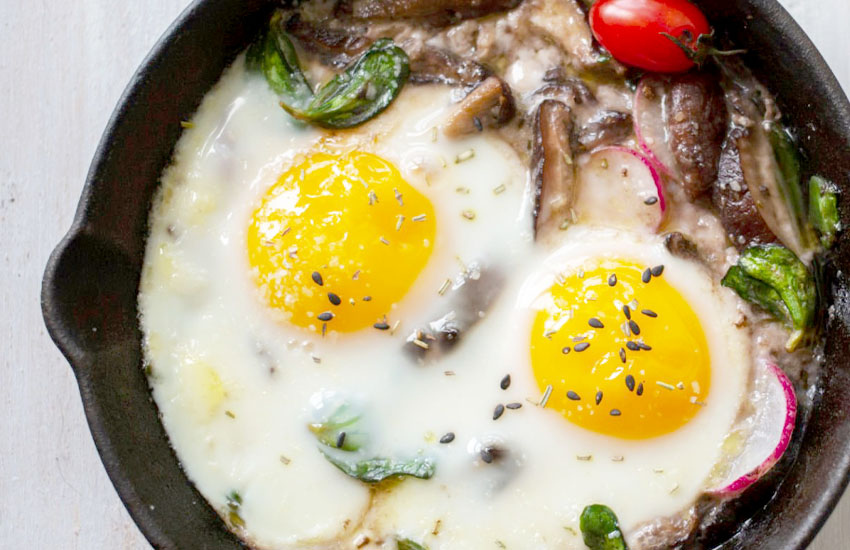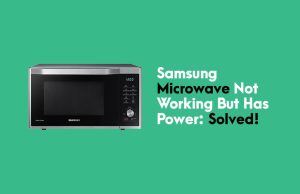Some of our posts contain affiliate links. If you buy through our links, I may earn a small commission at no extra cost to you.
What’s the Difference Between a Skillet and a Frying Pan?
Ever wondered why some recipes say to use a skillet while others mention a frying pan? Well, we’re here to clear up that confusion! In this blog post, we’ll talk about the differences between these two kitchen tools: the skillet and the frying pan.
Knowing how they’re different is important because they each have their own jobs when it comes to cooking. Even though they might seem alike, they’re actually quite unique in their shapes, sizes, and how they heat up.
Understanding these differences will help you pick the right one for your cooking adventures, making you a pro in the kitchen in no time! So, let’s get started and learn all about these cooking buddies!

Definition of Skillet and Frying Pan
If you’ve ever wandered around the kitchen section of a store, you’ve probably seen both skillets and frying pans stacked up on the shelves. They might look pretty similar, but there are some key differences between them. Let’s break down what each one is all about.
What’s a Skillet?

A skillet is like a deep, roundish cooking tool with a handle. You can use it for all sorts of things, like frying, searing, and even baking! It’s usually made of metal, like stainless steel or cast iron. Some skillets even have a lid to cover your food while it’s cooking.
Think of a skillet as your go-to buddy for making dishes with lots of sauce or liquid. Because of its depth, it’s great for cooking up things like stir-fries, stews, and sauces without making a mess all over your stove.
What’s a Frying Pan?

Now, let’s talk about frying pans. They’re like the flatter, shallower cousin of skillets. Picture a big, round pan with a handle sticking out one side – that’s a frying pan! Just like skillets, they’re usually made of metal, and you can find them in all kinds of materials like stainless steel, non-stick, or cast iron.
Frying pans are perfect for cooking things quickly over high heat. Whether you’re frying up some bacon, flipping pancakes, or sautéing veggies, a frying pan is your go-to tool for getting things crispy and golden brown.
Characteristics of a Skillet
Alright, let’s get into the nitty-gritty of skillets – those trusty cooking buddies with the deep sides and handy handles.
Shape and Size
Skillets are like the deep-dish pizzas of the cooking world. They’ve got high sides that curve up, kinda like a bowl. This design is what sets them apart from frying pans, which have lower, flatter sides.
Skillets come in all shapes and sizes, from small ones that are perfect for frying an egg to big ones that can hold enough chili to feed a crowd. No matter what size you choose, though, they all have one thing in common: those high sides that make them perfect for cooking up saucy dishes without making a mess.
Materials
When it comes to materials, skillets are pretty versatile. You can find them in all kinds of metals, like stainless steel, aluminum, and cast iron. Each material has its own pros and cons, so it really comes down to personal preference.
Stainless steel skillets are durable and easy to clean, while cast iron skillets hold heat like nobody’s business, making them great for things like searing meat. Aluminum skillets are lightweight and heat up quickly, but they can react with acidic foods, so keep that in mind if you’re cooking something like tomato sauce.
Uses
Skillets are like the Swiss Army knives of the kitchen – they can do it all! Whether you’re frying, sautéing, simmering, or even baking, a skillet has got you covered.
One of the best things about skillets is their versatility. You can use them on the stove, in the oven, or even on the grill! So whether you’re making a quick stir-fry on a weeknight or slow-cooking a hearty stew on a lazy Sunday afternoon, a skillet is the perfect tool for the job.
Skillets may seem simple, but they’re actually pretty amazing when you think about it. With their deep sides, handy handles, and versatile designs, they’re the unsung heroes of the kitchen.
Also Read: Can You Use a Skillet in the Oven?
Characteristics of a Frying Pan
Alright, let’s dive into the world of frying pans – those flat, round cooking champs with a handle sticking out the side.
Shape and Size
Frying pans are like the flatlanders of the cooking world. Unlike skillets, they have low sides that spread out wide, kinda like a plate. This design makes them perfect for cooking things quickly and evenly.
Just like skillets, frying pans come in all shapes and sizes. From small ones that are perfect for frying an egg to big ones that can hold enough pancakes to feed a hungry crowd, there’s a frying pan out there for everyone.
Materials
When it comes to materials, frying pans are pretty versatile. You can find them in all kinds of metals, like stainless steel, aluminum, and cast iron. Each material has its own pros and cons, so it really comes down to personal preference.
Stainless steel frying pans are durable and easy to clean, while cast iron frying pans hold heat like nobody’s business, making them great for things like searing meat. Aluminum frying pans are lightweight and heat up quickly, but they can react with acidic foods, so keep that in mind if you’re cooking something like tomato sauce.
Uses
Frying pans are like the speed demons of the kitchen – they’re perfect for cooking things quickly over high heat. Whether you’re frying up some bacon, flipping pancakes, or sautéing veggies, a frying pan is your go-to tool for getting things crispy and golden brown.
One of the best things about frying pans is their versatility. You can use them on the stove, in the oven, or even on the grill! So whether you’re making a quick breakfast on a busy morning or whipping up a gourmet dinner for date night, a frying pan is the perfect tool for the job.
Frying pans may seem simple, but they’re actually pretty amazing when you think about it. With their flat surfaces, handy handles, and versatile designs, they’re the unsung heroes of the kitchen.
Key Differences between a Skillet and a Frying Pan
Alright, let’s talk about the big differences between skillets and frying pans. Even though they might seem pretty similar, some key things set them apart.
Shape and Depth
One of the main differences between skillets and frying pans is their shape and depth. Skillets have higher sides that curve up, kinda like a bowl. This makes them perfect for cooking dishes with lots of sauce or liquid, like stir-fries or stews.
On the other hand, frying pans have lower sides that spread out wide, kinda like a plate. This design is perfect for cooking things quickly over high heat, like frying up bacon or flipping pancakes.
Sloped Sides Vs. Straight Sides
Another difference between skillets and frying pans is the shape of their sides. Skillets usually have sloped sides that curve up, while frying pans have straight sides that go out horizontally.
The sloped sides of skillets make it easier to stir and toss your food, so they’re perfect for dishes where you need to move things around a lot. On the other hand, the straight sides of frying pans make it easier to flip and turn your food, so they’re great for dishes where you need to cook things evenly on both sides.
Flared Rims
Some skillets and frying pans also have flared rims, which means that the edge of the pan curves out slightly. This can make it easier to pour liquids out of the pan without making a mess.
Skillets often have flared rims because they’re designed for cooking dishes with lots of sauce or liquid. The flared rim makes it easier to pour out any excess liquid without spilling it all over your stove.
Frying pans, on the other hand, sometimes have flared rims, but not always. Since they’re designed for cooking things quickly over high heat, pouring out excess liquid isn’t usually a concern.
Cooking Methods
Because of their different shapes and depths, skillets and frying pans are best suited for different cooking methods.
Skillets are perfect for dishes where you need to cook things slowly over low heat, like simmering a stew or braising meat. The high sides of skillets help contain the heat and keep everything cooking evenly.
Frying pans, on the other hand, are perfect for dishes where you need to cook things quickly over high heat, like frying up bacon or searing a steak. The low sides of frying pans allow the heat to spread out evenly across the surface of the pan, so your food cooks quickly and evenly.
So, there you have it – the key differences between skillets and frying pans. While they might seem pretty similar at first glance, their shapes, depths, and even the way they distribute heat can affect how your food turns out.
Whether you’re cooking up a quick breakfast or whipping up a gourmet dinner, choosing the right tool for the job can make all the difference. So next time you’re in the kitchen, think about whether you need a skillet or a frying pan – your taste buds will thank you!
When to Use a Skillet Vs. a Frying Pan
Okay, let’s talk about when to grab that trusty skillet and when to reach for the frying pan. They might seem similar, but they each have their own special jobs in the kitchen.
When to Use a Skillet
Imagine you’re cooking up a big pot of chili or a creamy pasta sauce. That’s when you want to grab your skillet. Skillets are perfect for dishes with lots of sauce or liquid because their high sides help keep everything contained.
Skillets are also great for dishes where you need to cook things slowly over low heat, like simmering a stew or braising meat. The high sides of the skillet help keep the heat in and ensure that everything cooks evenly.
So, if you’re making something saucy or you need to cook things low and slow, grab your skillet and get cooking!
When to Use a Frying Pan
Now, let’s talk about frying pans. Picture yourself flipping pancakes or frying up some bacon – that’s when you want to grab your frying pan. Frying pans are perfect for cooking things quickly over high heat because their low sides allow the heat to spread out evenly across the surface of the pan.
Frying pans are also great for dishes where you need to cook things evenly on both sides, like searing a steak or frying chicken. The low sides of the frying pan make it easy to flip and turn your food without making a mess.
So, if you’re making something crispy or you need to cook things fast and hot, grab your frying pan and get sizzling!
Final Verdict
So, now you know the scoop on skillets and frying pans! They may look alike, but they have different jobs in the kitchen. Skillets are best for saucy dishes and slow cooking, while frying pans are perfect for quick, crispy meals. Having both in your kitchen means you’re ready for anything – from pancakes to pasta sauce. So, next time you’re cooking up a storm, choose the right tool for the job and watch your meals shine!










